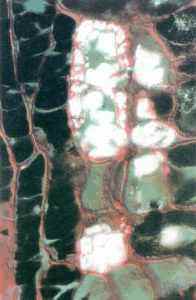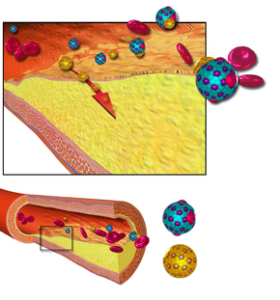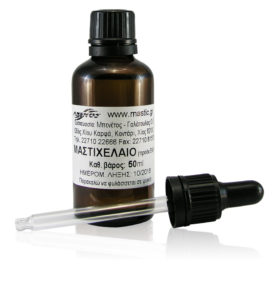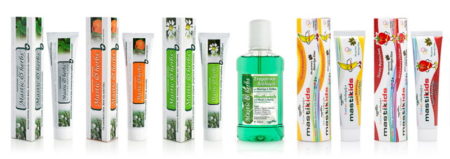Mastic uses
Mastic has many useful qualities and uses.
It absorbs cholesterol, it has antibacterial properties, acts as an oral antiseptic, aids digestion, tightens the gums, heals wounds and scientists discovered that when it is administrated even in small doses it cures stomach ulcers.
Chios mastic gum inhibits influenza A virus replication and viral pathogenicity
New research by five Korean and one American university has revealed the beneficial properties of mastic against flu
Chios mastic displays a potent anti-IAV activity by blocking the early stage of viral replication. Thus, mastic gum could be exploited as a novel therapeutic agent against IAV infection
Use of mastic as a component of wound healing bandages and as a skin regeneration agent.
Relevant publications have revealed that mastic presents excellent wound healing and suturing properties, while at the same time it does not bring undesirable side effects to the skin (such as dermatitis, skin decoloration, etc), like other common healing products do.
This unique natural resin is already used very often as a component of bandages, adhesive plasters, compresses and other healing agents applied for the protection and healing of wounds or post-surgical incisions.
Use in Dentistry and Orthodontics
In dentistry, mastiha is used as a component of dental fillings and tooth moulds. Chewing mastiha assists in mouth disinfection, in reducing the frequency of orthodontic problems and in gum strengthening. Moreover, it humidifies the oral cavity, thanks to salivation, thus cleaning and perfuming the mouth. Chewing mastiha systematically eliminates or inhibits significantly the formation of microbial plaques. Therefore, it helps preventing caries and periodontal troubles. Finally, eugenol contained in mastiha oil is used today in dentistry as an antiseptic and soothing substance. Mastiha is used as a toothpaste and mouth wash ingredient for cleanness and disinfection of the oral cavity.
Medicinal – pharmaceutical use
Mastiha fights helicobacter Pylori according to recent studies carried out by Nottingham university and published in the reliable medical journal The New England Journal of Medicine. Furthermore, universities in Greece and abroad currently study mastiha’s action in relation to diabetes mellitus, cholesterol and triglycerides. It is also worth mentioning mastiha’s effect on liver function by stimulating its detoxifying activity. Today, products such as mastiha powder, mastiha capsules and many more are widely on sale and are actually used by many people for dealing with the above health problems. Mastiha is also used in ointments against burns, frostbites, skin troubles as well as in adhesive plasters.


Industrial use
As mastiha is partially dissoluble in alcohol and fully dissoluble in ether, terpentine and other organic solvents, it is widely used in industry.
Mastiha oil is used as a perfume but also as a perfume stabilizer. In textile and cotton industry it is used as a colour stabilizer for textile starching, especially for silk. In tanning industry, in elastics and plastics industry, in the production of colours, glues and glutinous substances, in camphor production and in colour printing, mastiha is used as a colour stabilizer.
It is also used for making high grade varnishes for musical instruments (such as violins) and for airplanes, furniture etc, as well as Spanish (sealing) wax.
The use of natural mastic in cooking, baking, sweet making.
Chios mastic is one of the oldest known spices in the Mediterranean and lends its distinctive aroma in many foodstuffs.
Mastic has been traditionally used as flavouring for festive breads, brioches and biscuits. In certain areas of Greece, mostly of the Aegean Sea, mastic is often used as flavouring for Easter sweets. Mastic is also used in confectionery, mostly for mastic-flavoured desserts and for a delicious ice-cream known as kaimaki, which has an unusual a bit chewy and stringy texture thanks to the addition of Chios mastic as a thickening agent. But modern Greek chefs have proved that this spice with its unique aromatic, wood- and pine-like, exotic taste can go along with a lot of foods even with chocolate.
Moreover, mastic makes an important dietary supplement especially in cases of lack of trace elements.
In Greece and Cyprus they even use it to flavour bread. In Lebanon and Syria they make a sort of traditional mastiha-flavoured cheese.
For Arabs, mastiha is considered as a great luxury for flavouring food, sweets or milk.
Nowadays a variety of products are made from the mastic resin, including chewing gum, alcoholic drinks, sweets, spices, creams, lotions, toothpastes, while the most important use is in the medical industry all over the world.
Mastic properties
It is made of hundreds of components, among which only 80 are contained in identifiable quantities. Such multitude probably justifies the multiple properties and uses of mastic / mastic oil, in the fields of food industry, health and cosmetic care.
Antimicrobial action of Mastic oil
Significant research activity has been carried out regarding the antimicrobial action of mastic’s essential oil – mastic oil. Researchers have studied in particular that when mastic oil has been incorporated in the growth medium, it can delay the growth rate, but also eliminate microbes, bacteria and pathogenic micro organisms.
The results of such studies confirm the important antimicrobial and antifungal action of mastic oil, thus encouraging its further usage as a component of pharmaceutical and other protection and care products.
Chios Mastic in relation to oral hygiene and dental research.
Scientific studies have proved that chewing natural mastic gum is very helpful for gum exercise, along with all its relevant beneficial effects in dental health. It has been further confirmed that natural mastic, unlike ordinary chewing gums, induces greater salivation due to its particular taste and its relative hardness, something that gives a greater feel of mouth freshness and cleanness, while it has been also proved to be relieving for people suffering from dry mouth, a disorder especially common among elderly persons.
Mastic as a protective agent against atherosclerosis
Recently there has been an intense scientific interest regarding the use of natural antioxidant agents as protective means against the atherosclerosis disease. Because of their composition, these substances offer protection against the formation of atheromatous plaques, thus preventing the risk of atherosclerosis and heart diseases. The presence of phenolic molecules, triterpenic compounds as well as phytosterols among Chios mastic’s components is particularly important because of their action against the oxidation of low density lipoprotein (LDL) and that is a significant evidence for its potential antioxidant effect. Research activity in that field is still in an experimental stage. In any case, the results that have been published up to now are particularly encouraging and indicate thaa strong possibility of using mastic as a natural antioxidant agent.

Chios natural Masticha’s action in terms of prevention and treatment of peptic system diseases.
The results of recent scientific studies related to mastic’s therapeutic action with regard to disorders of the peptic system are especially worth-mentioning.
Ever since antiquity, it had been known that Chios mastic had a strong positive effect in stomach comfort, e.g. relieving from gastrointestinal disorders, dyspepsia, stomach ache, peptic ulcers, etc.
In our times, scientific, laboratory and clinical studies have confirmed the previously significant action of Chios mastic. The first research efforts were carried out in university foundations and clinics of the Arab world, areas where the use of Chios mastic was and still is widespread even in practical medicine concoctions.





